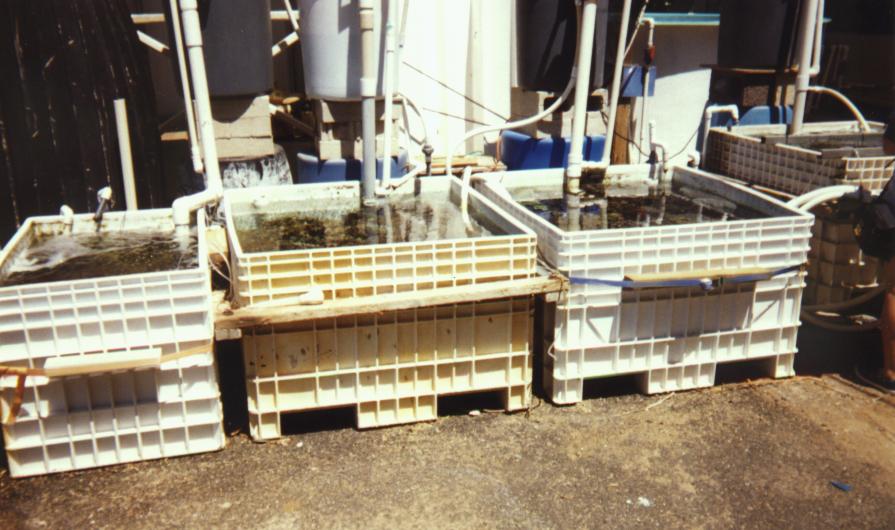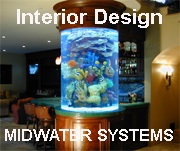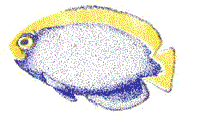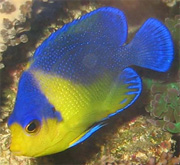|
How to Build a Powerful Surge Device
By Dr. Bruce Carlson, Director of the Waikiki
Aquarium
The following is reproduced with the permission of Tom Frakes of Aquarum
Systems and SeaScope, Vol 13, Summer 1996.
When we began keeping acroporid corals in 1985, we believed it would
be necessary to provide significant turbulence in the water to simulate
the corals' natural environment. Recent research has indicated that turbulent
water is indeed vital to the health of these corals as it greatly facilitates
the diffusion of nutrients and waste in and out of the corals. The problem
for us was how to develop a device that provided a strong but periodic
surge that was inexpensive, and most of all would be maintenance free.
Dump buckets are notoriously troublesome, requiring constant adjustment
and repairs. Powerheads are generally too small for big aquariums and generally
unsuitable for use outdoors. Larger pumps provided the output, but a continuous
flow of water is not good for the corals, and did not simulate the natural
conditions of periodic surge.
The best design to meet our criteria was an automatic siphon device
which has proven to be reliable and effective and is easy build and to
operate. Delbeek and Sprung (1994) published a diagram of the surge device
that I have received many requests for more details, hence the publication
of this report.
Before proceeding, I must acknowledge the advice of David Powell at
the Monterey Bay Aquarium. When we first considered building one of these
devices in 1985, Dave gave me a verbal description of a similar system
that he installed at the Steinhart Aquarium. Many public aquariums use
Surge tanks for a variety of applications but we were probably the first
to employ one with living corals.
How It Works The accompanying diagram illustrates a 150 gallon
aquarium (#4). A Little Giant 3MD pump (#6) draws water from the aquarium
through a 3/4" PVC pipe (#5) and delivers it to a 35 gallon barrel which
is the surge tank (#1). When the surge tank is full, the 2" diameter PVC
siphon pipe (#2) is also completely filled with water and automatically
begins to siphon at a rate faster than the pump is filling the tank. When
the surge tank is empty, the siphon sucks air and stops. The pump continues
delivering water into the surge tank and the cycle repeats itself.

Much smaller devices can be constructed on the same basic plan. Although
the pump and pipe sizes have to be scaled up or down as the dimensions
change, particularly the vertical dimensions. At this time all I can suggest
is trial and error for sizing, although some details for larger systems
are presented below.
Trouble-shooting Sometimes when the surge tank is full the siphon
never really gets going. Instead, the water flows out the siphon pipe as
fast as the pump is pumping the water in. To remedy this, we have placed
the discharge end of the siphon pipe so that it is underwater at all times
( position #9 ). This creates a bit of back pressure in the pipe, allowing
in the upper surge tank to rise a bit higher and thus start the siphon.
Also a smooth bend at the top of the siphon, rather than a right-angle
bends as shown in the diagram, will facilitate siphon start-up. At other
times the siphon wont start no matter how high the water level is in the
upper reservoir. We reason that this is due to air trapped in the discharge
siphon which has nowhere to go because the lower end of the pipe is always
under water. To overcome this problem, we installed a 1” PVC air-vent pipe
(#3) at the point on the siphon pipe just above the highest water level
in the aquarium ( at position #10 ). But this air vent may also prevent
the siphon from starting and therefore a mechanism is requires to close
it at the crucial moment when the siphon is to start. To avoid using a
valve, which increases maintenance, we simply ran the air vent pipe back
up into the reservoir tank with the opening of the air vent set just at
the upper water level in the tank ( #8 ). The rising water acts like a
valve to close off the opening of the pipe thus allowing the siphon to
begin - presto, no moving parts !
Note: an air vent pipe smaller than 1” in diameter may work, but we
find they clog too easily with salt and therefore require more maintenance.
Unfortunately, once the siphon starts the air vent quickly reopens and
sucks in air like a venturi. The discharge into the tank may be disturbing
to aquarists who don’t want bubbles in their aquariums. This can be resolved
by installing a simple flapper valve, or check valve on the air vent, but
there will always be some air discharged into the aquarium.
Sometimes the siphon wont stop. A 45 degree angle cut at the intake
end of the siphon pipe, as shown in the diagram, can help resolve this
by allowing more air to be sucked in when the siphon reaches the bottom
of the surge tank.
Drawbacks Depending on the size of the surge tank, the fluctuation
in water level in the aquarium can be several inches ( 3” inches in our
set-up ). We have not figured out a simple way to resolve this problem
to monitor evaporation in a closed system. One possible solution would
be to install a float switch in the aquarium or a separate reservoir and
set it for the lowest “normal” water level. When the water level drops
below that mark because of evaporation, the float switch will activate
the flow of new replacement water. Of course, this will be periodically
interrupted when the surge device dumps water back into the aquarium but
none the less should work.
Besides space requirements, the other annoying part of these surge devices
is noise. The gurgling sound when the siphon starts and sucking sound when
it stops can be very disturbing - definitely not recommended for the bedroom
if you want a good night’s sleep.
Applications We have a 200 gallon surge tank fitted with a 6”
diameter PVC constantly filled by a 1.5 hp pump that delivers a powerful
surge of water to our outdoor 7,000 gallon “Edge of the Reef” exhibit.
This device has been in continuous operation since 1986 and has required
virtually no maintenance except for pump repairs.

All of our outdoor coral culture tanks are fitted with 35 gallon surge
tanks, while our indoor 390 gallon exhibit tank is operated by a ½
hp pump which lifts water over 6’ to a 55 gallon surge tank that delivers
a powerful jet of water every 3 minutes via a 3” PVC siphon pipe. Wilfred
Fong of the San Francisco Aquarium Society recently built one of these
devices for his home aquarium after visiting the Waikiki Aquarium. His
surge tank is much smaller ( about 10 gallons ) but still produces a good
surge of water to his reef aquarium.
Our newest exhibit will have two surge tanks, both operated from a single
pump and each delivering surge to different points in the aquarium. One
surge tank will be 55 gallons and the other 35 gallons so that the periodicity
of the output of the two tanks will vary. Occasionally they will both discharge
simultaneously creating different churning of the water in the exhibit.
To handle the combined output of the two tanks we will add a 150 gallon
sump at the same level as the exhibit aquarium connected by a 19” long,
by 2” high overflow slot to allow excess water to flow from the exhibit
tank to an adjacent sump where it will be pumped to the surge tanks ( similar
to Delbeek and Sprung, page 170 ).
Once you build one of these tanks and learn its idiosyncrasies you will
find it a very useful devise for a variety of situations requiring a strong
but periodic surge of water. Best of all, once you get it started it will
run forever.
|













